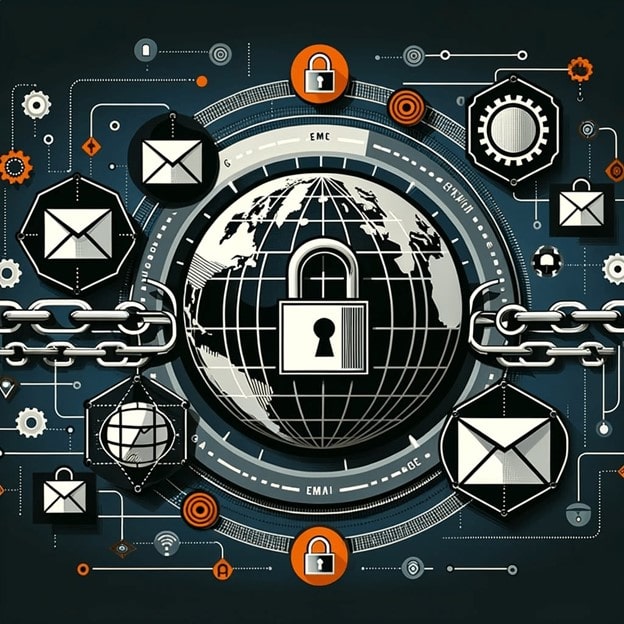Domain-based Message Authentication, Reporting & Conformance
In the digital world, where email is an essential communication tool for businesses and individuals alike, ensuring the authenticity of email messages is paramount. DMARC, which stands for Domain-based Message Authentication, Reporting & Conformance, is an email-validation system designed to protect email domains from being misused in phishing scams, email spoofing, and other cyberattacks. This article aims to provide a detailed introduction to DMARC, its purpose, functionality, benefits, and implementation guidelines.
What is DMARC?
DMARC is a technical standard that helps email domain owners to protect their domain from unauthorized use, commonly known as email spoofing. The purpose of DMARC is to give email domain owners the ability to specify how an email from their domain should be handled if it fails to pass authentication tests like SPF (Sender Policy Framework) and DKIM (DomainKeys Identified Mail).
How DMARC Works
- Email Sending:
- An organization sends an email, and it is authenticated via SPF and/or DKIM.
- DMARC Check:
- The receiving email server checks the DMARC record of the sender's domain published in the DNS. The DMARC record informs the receiver of the policy set by the sender, indicating whether the email should be accepted, rejected, or treated as suspicious if authentication fails.
- Policy Application:
- If SPF and/or DKIM fail, the receiver applies the DMARC policy as instructed by the DMARC record of the sender's domain.
- Reporting:
- Regardless of the DMARC policy outcome, the receiving server sends a report back to the sender's domain. This report includes details on whether the emails passed or failed DMARC evaluation and why.
Benefits of DMARC
- Prevents Email Spoofing:
- DMARC prevents bad actors from using your domain to send spam, phishing emails, or malware.
- Increases Email Deliverability:
- Email servers trust messages more when they pass DMARC checks, reducing the likelihood of legitimate emails being sent to the spam folder.
- Provides Insight:
- DMARC reports give domain owners insight into their email ecosystem, allowing them to see who is sending email on behalf of their domain.
- Improves Domain Reputation:
- A well-maintained DMARC record can improve a domain's reputation among email providers, enhancing overall email deliverability.
- Encourages Compliance:
- Adoption of DMARC encourages best practices in email authentication and sends a positive signal to your customers and partners about your commitment to security.
Implementing DMARC
The process of implementing DMARC involves several key steps:
- Ensure SPF and DKIM are in place:
- Before DMARC can be used, SPF and DKIM should be correctly set up for your domain.
- Create a DMARC Policy:
- Create a DMARC record and publish it in your DNS. A DMARC record starts with 'v=DMARC1;' and includes the policy (p=), which can be 'none', 'quarantine', or 'reject'.
- Monitor and Analyze Reports:
- Analyze the reports you receive to understand your email flow and correct authentication issues.
- Adjust Your Policy:
- Start with a 'none' policy to monitor performance and then tighten the policy to 'quarantine' or 'reject' as you become confident in your email authentication processes.
- Maintain and Update:
- Regularly review your DMARC policy and reports to adjust to any changes in email infrastructure or practices.
Conclusion
DMARC is an essential tool for enhancing email security and integrity. It complements SPF and DKIM protocols by adding a layer of instruction and reporting that helps domain owners control and monitor the use of their email domain. With cyber threats continually evolving, the adoption of DMARC is becoming increasingly important. By properly implementing DMARC, organizations can protect their brand, increase email deliverability, and maintain the trust of their customers and partners in their email communications.


